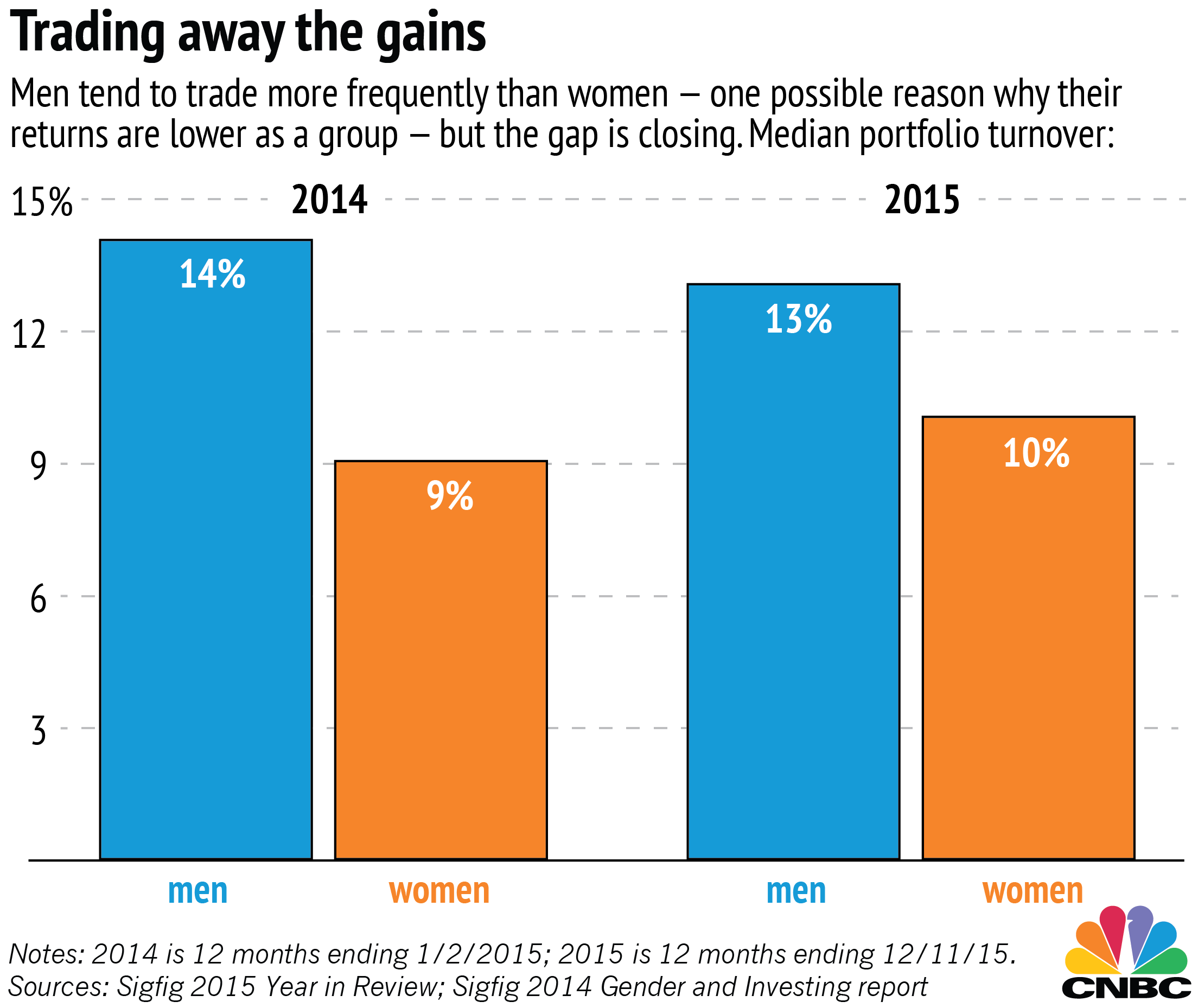Men didn't get any better at investing in 2015, at least compared to their female counterparts.
The median male investor lost 1.8 percent over the last 12 months, including fees and dividends, while women squandered only 1.4 percent, according to a review of 360,000 investors using robo-advisor Sigfig to track their portfolios.
Of course, we're all pretty dismal — the S&P 500 was down 1.1 percent over that same period. So if everyone invested $100,000, the median man threw away $670 more than if he had simply invested in an index fund, and the median woman wasted $270.
In a sense, that's actually better than last year, when the market was up. The median investor last year far underperformed the booming market; the average man investing a hypothetical $100,000 made $8,250 less than the S&P 500 and the average woman made $7,650 less.





